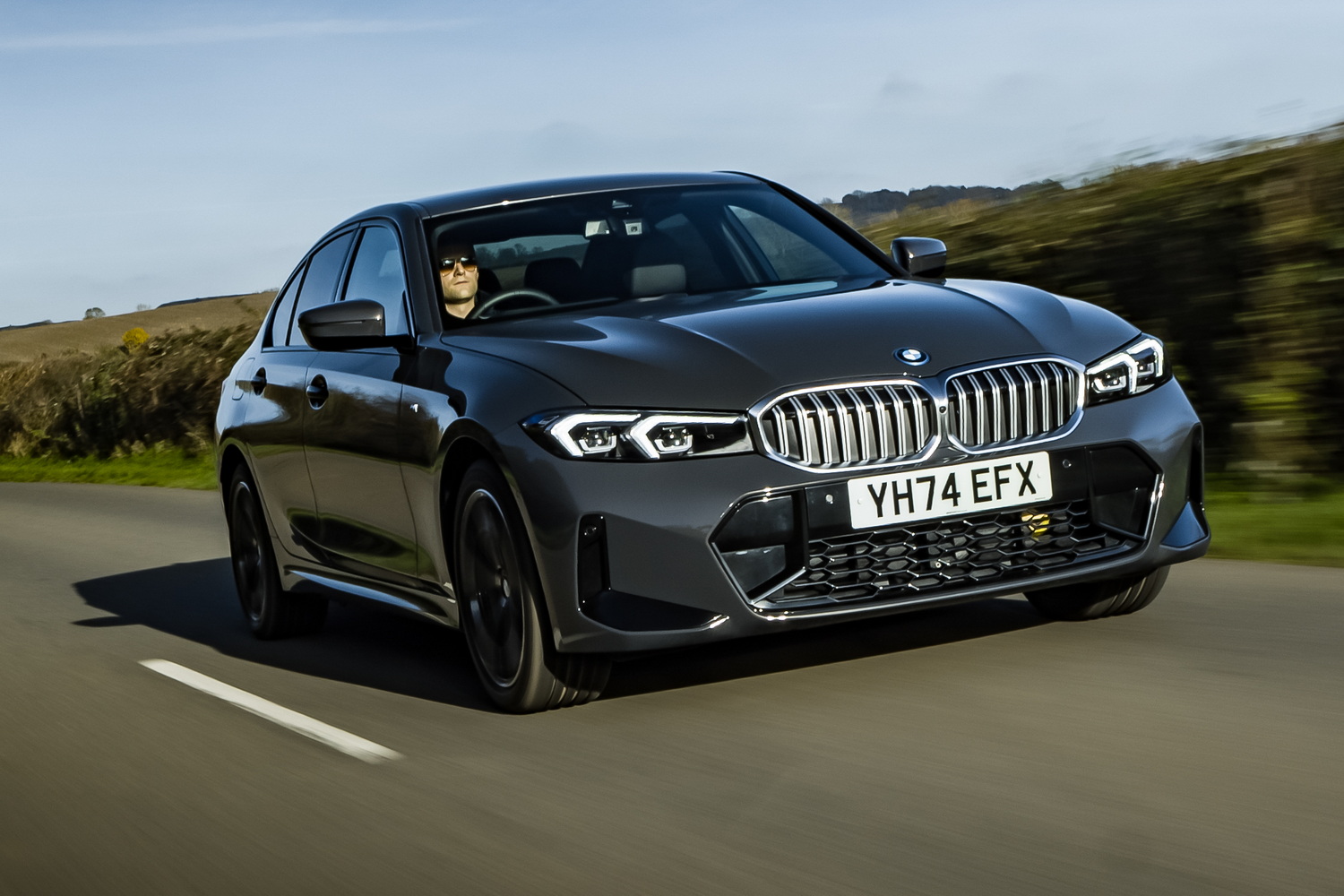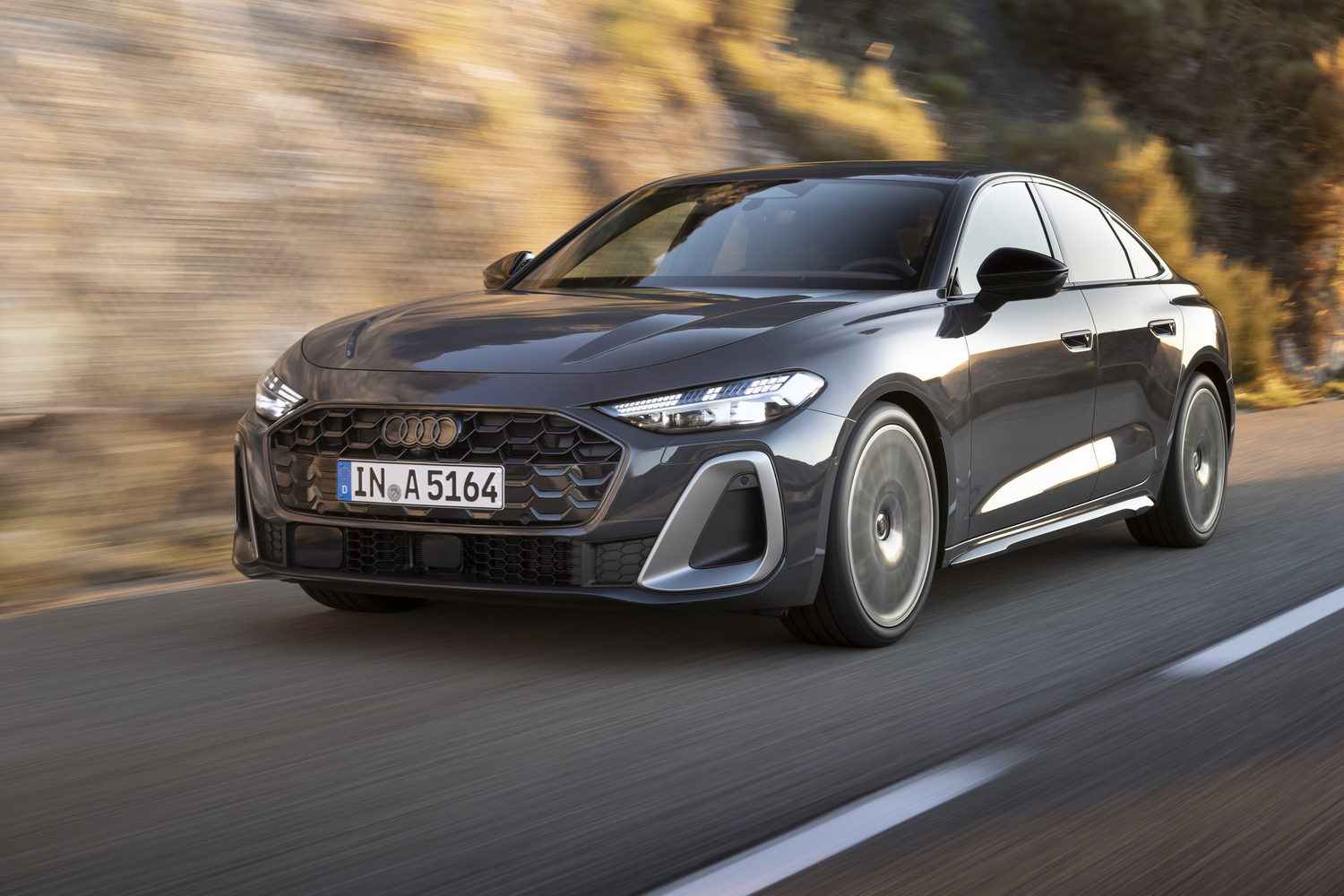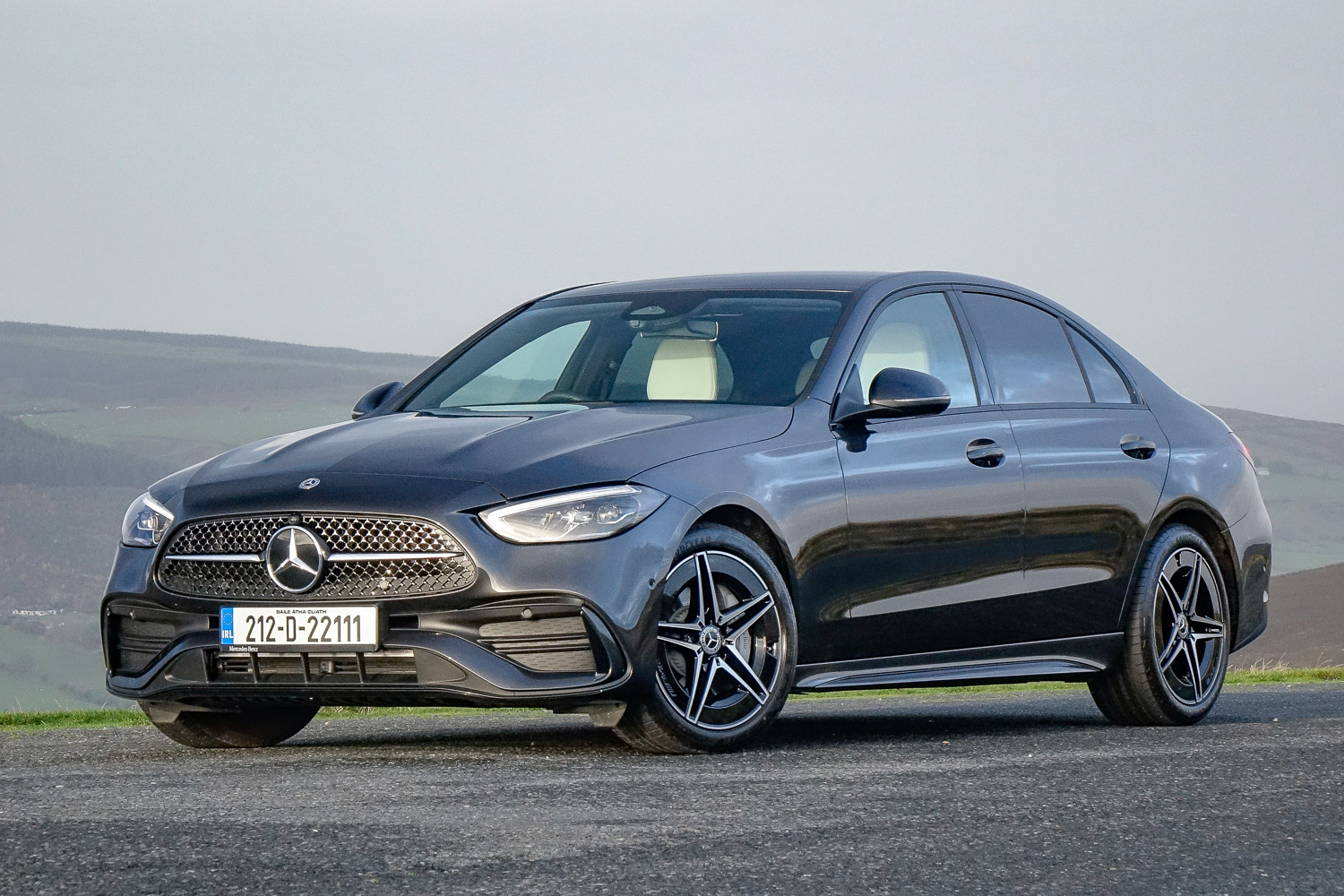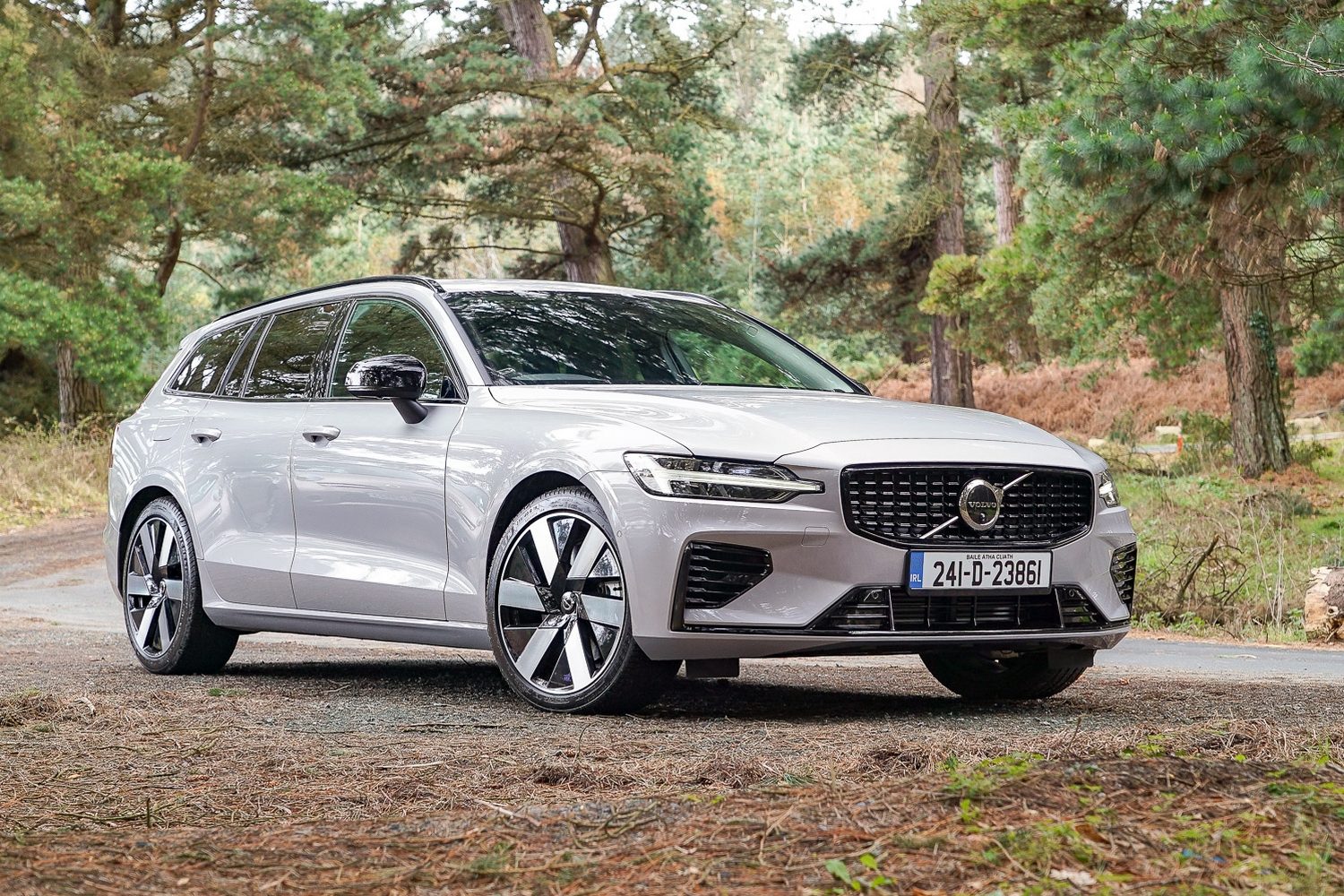BMW’s 3 Series is a car so widespread and well-known that it barely needs any introduction, so here’s the seventh-generation car gaining a tech overhaul ready for the 2025 model year. As it has already had its ‘life-cycle impulse’ (LCI: or facelift, in BMW-speak) in 2022, then hardly anything has changed on the outside, while inside there’s a slicker operating system for the infotainment - but the Three was brilliant as it was anyway, so such modest updates aren’t necessarily bad news or an indication of product stagnation.
Perhaps the main talking point is that this 330e saloon model, which is the plug-in hybrid (PHEV), now has a much bigger battery pack for increased driving range. We’ve driven the car over in the UK in M Sport format to see how it stacks up.
How much is the 2025 BMW 330e in Ireland?
The good news, as it ever was with our CO2-biased taxation system, is that the 330e is still the entry-level model of the 3 Series when it comes to pricing. It shares the 184hp 2.0-litre turbocharged petrol engine with what should ostensibly be the base car, the 320i, but the addition of its PHEV portion of the running gear, and despite the fact it produces much higher power and torque, means the 330e only emits 19-25g/km of CO2 - whereas the 320i is in the 147-165g/km bracket. As a result, a Sport model of the 330e is €57,705 and the M Sport €59,245, while the equivalent 320i cars are €59,095 and €60,955. It therefore makes the utmost sense to go for the PHEV over the pure-petrol 3 Series.
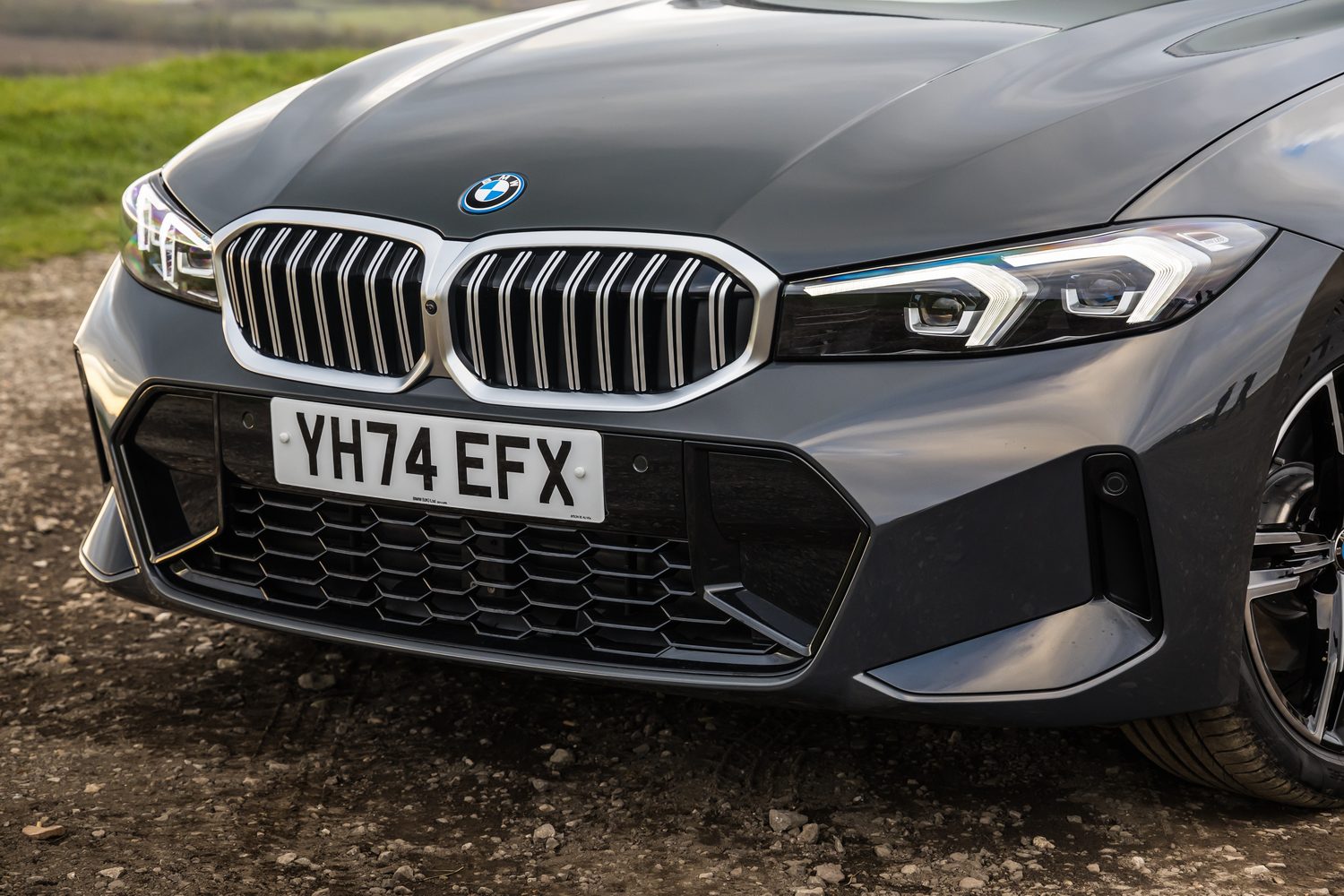
What’s different on the outside of the BMW 3 Series?
Precious little. Chunkier bumpers, smoother headlamp clusters and a general sharpening of the 3 Series’ design took place back in 2022, so here you’re mainly focusing on the two new body colours, which are Arctic Race Blue and Fire Red (both metallics), as well as a new design of 19-inch alloy wheels for the M Sport models. These can be finished in either Jet Black or a bicolour option, and thus the 330e - with its crisp lines and pleasing proportionality - looks just as good as it has done for the past two years. It’s also one of the best-looking modern BMs of all to our eyes.
A look inside and at the BMW 330e’s on-board technology
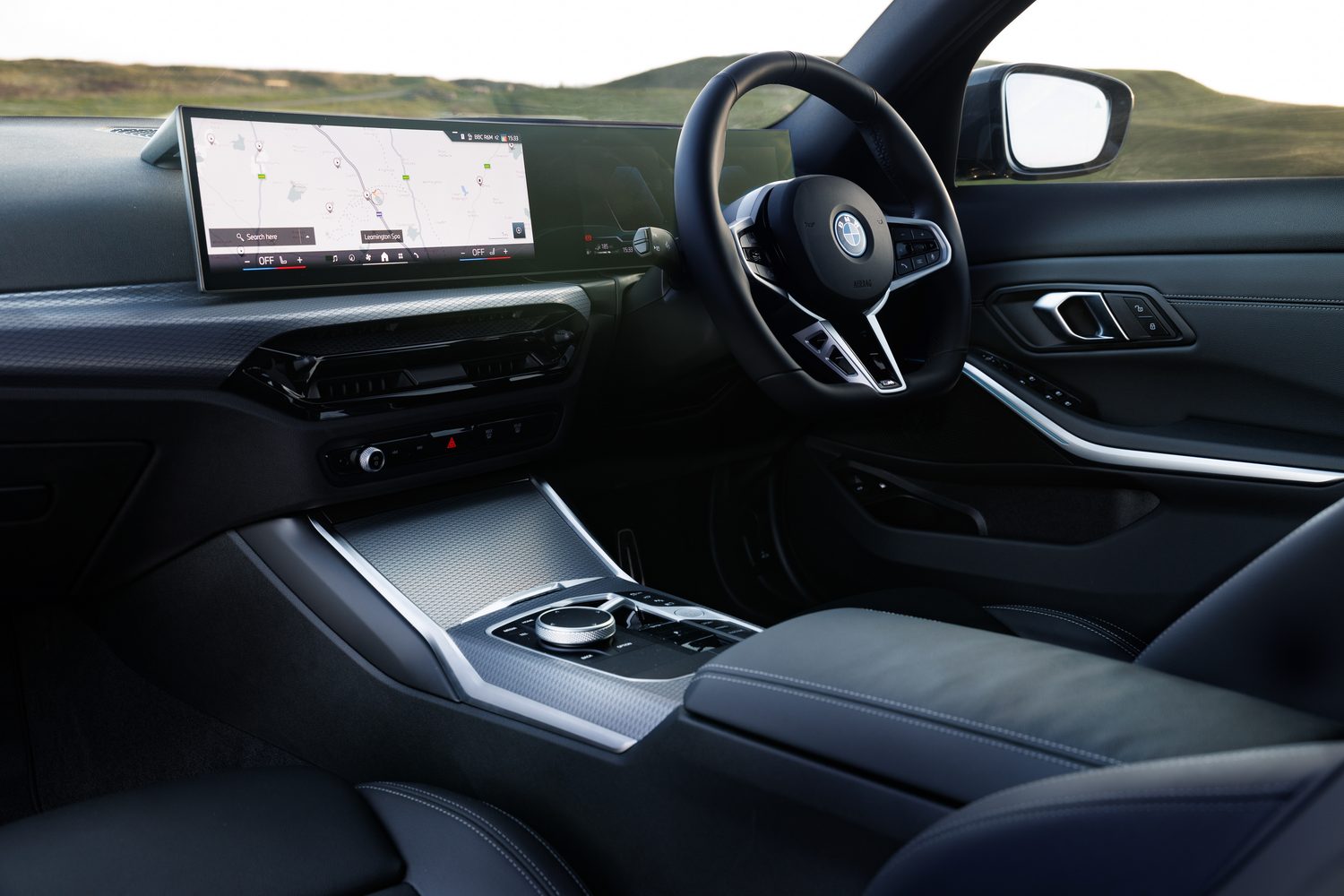
Nothing physically has changed inside, save for some new upholstery choices and trim finishes - and the addition of an odd ‘polygonal’ steering wheel which feels massive due to its sheer size and the fatness of the padding on the rim.
The Curved Display now runs Operating System 8.5, which tidies up how you oversee the climate-control functions. But don’t worry, there’s still an iDrive rotary controller on the transmission tunnel, so you can interact with the BMW’s display without having to jab and swipe at it all the time. Overall, the 3 Series’ cabin remains excellent throughout, although boot space in the 330e is reduced by 105 litres compared to the 320i’s 480-litre capacity, due to the placement of the battery pack under the floor of the cargo bay.
How safe is the BMW 3 Series?
This generation of 3 Series picked up a full five-star Euro NCAP rating but that was back in 2019, and the tests have become tougher since then. Nevertheless, with a good assortment of advanced driver assist technologies and a solid structure, a BMW 330e is going to be a secure vehicle to choose if you’re using it for family-car duties, alongside its more commonplace business and commuting work.
Driving the BMW 330e
The 330e has exactly the same set-up in terms of its engine, gearbox and electric motor as it had prior to this 2025 model year update. This means, as we mentioned earlier, precisely the same spec of 2.0-litre turbocharged four-cylinder petrol engine as the 320i can be found under the bonnet, developing 184hp and 300Nm on its own, but the PHEV then has a 109hp/265Nm electric motor to go with it, increasing the peak drivetrain outputs to 292hp and 420Nm. This allows it to run 0-100km/h in 5.9 seconds, fully 1.5 seconds quicker than the 320i.
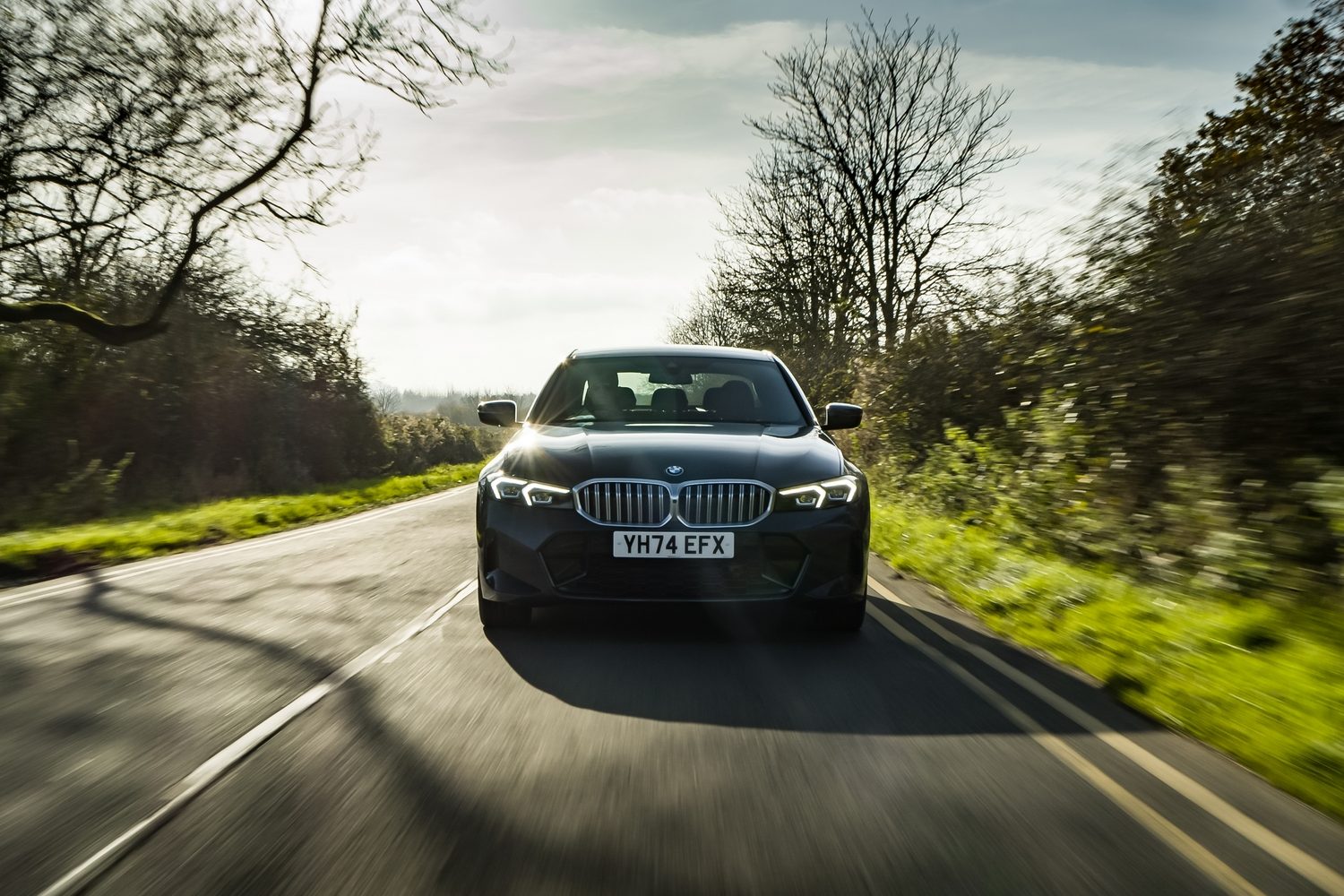
The change comes with the battery pack, which has been considerably enlarged from 12kWh previously to 19.5kWh now. That hugely increases the official range, from 45-66km on the old 330e models to 85-101km for this updated version. It also improves fuel efficiency, both on paper and in reality, because the bigger battery means the PHEV is clearly going to run longer on electric power at all times.
However, the other side of this is that the 330e has gained some weight. It was a 1,800kg car before, but now it has ballooned to 1,910kg. That’s not insignificant for a vehicle of the BMW’s class, especially as that 320i we keep mentioning is a heck of a lot lighter at 1,590kg. And it’s this bulk that permeates the way the 330e drives. It’s fine - more than fine, in fact; actually, pretty talented, as you’d expect of a BMW 3 Series - but it’s not the sharpest thing to ever wear the blue-and-white roundel.
Performance, for instance, doesn’t feel appreciably strong. The 2.0-litre engine is well isolated and remains fairly civilised until it’s reaching higher revs, but if you remember old 330i models with their creamy straight-sixes, the 330e never gets close to reaching the power-delivery heights of those predecessors, despite the fact it’s considerably more potent. It always feels like what it is, a four-cylinder turbo hauling a lot of mass. It has a great gearbox, though, and more than enough traction and grip to ensure you can lean on what chassis talents the PHEV has, without worrying its rear-wheel-drive status might make it a bit twitchy. Its electric motor also has enough punch to propel the 330e up to 140km/h all on its own, without needing any help from the combustion engine.
But beyond the straight-line speed, which won’t blow you away as it is, there’s not a huge amount of dynamic reward. That 1.9-tonne heft also means you won’t really enjoy throwing the 330e through some curves as much as you might imagine for a Three. It’ll do it if you ask it to and do it to a standard that would eclipse that of some rivals, but by BMW’s own exacting standards the plug-in hybrid 3 Series feels a touch leaden and uninvolving approaching the limit. This is especially true of the steering, robbed of the final nuances of feel for the driver by the comically chunky, bizarre-shaped steering wheel.
Never mind; this is a plug-in hybrid, and if it’s lovely and super-refined to travel in, then so-so handling isn’t a big problem. But even here, there are still caveats. For most of the time, yes, the 330e is highly civilised and feels like a far more luxurious car than it already is, with excellent damping and superb noise suppression in the passenger compartment.
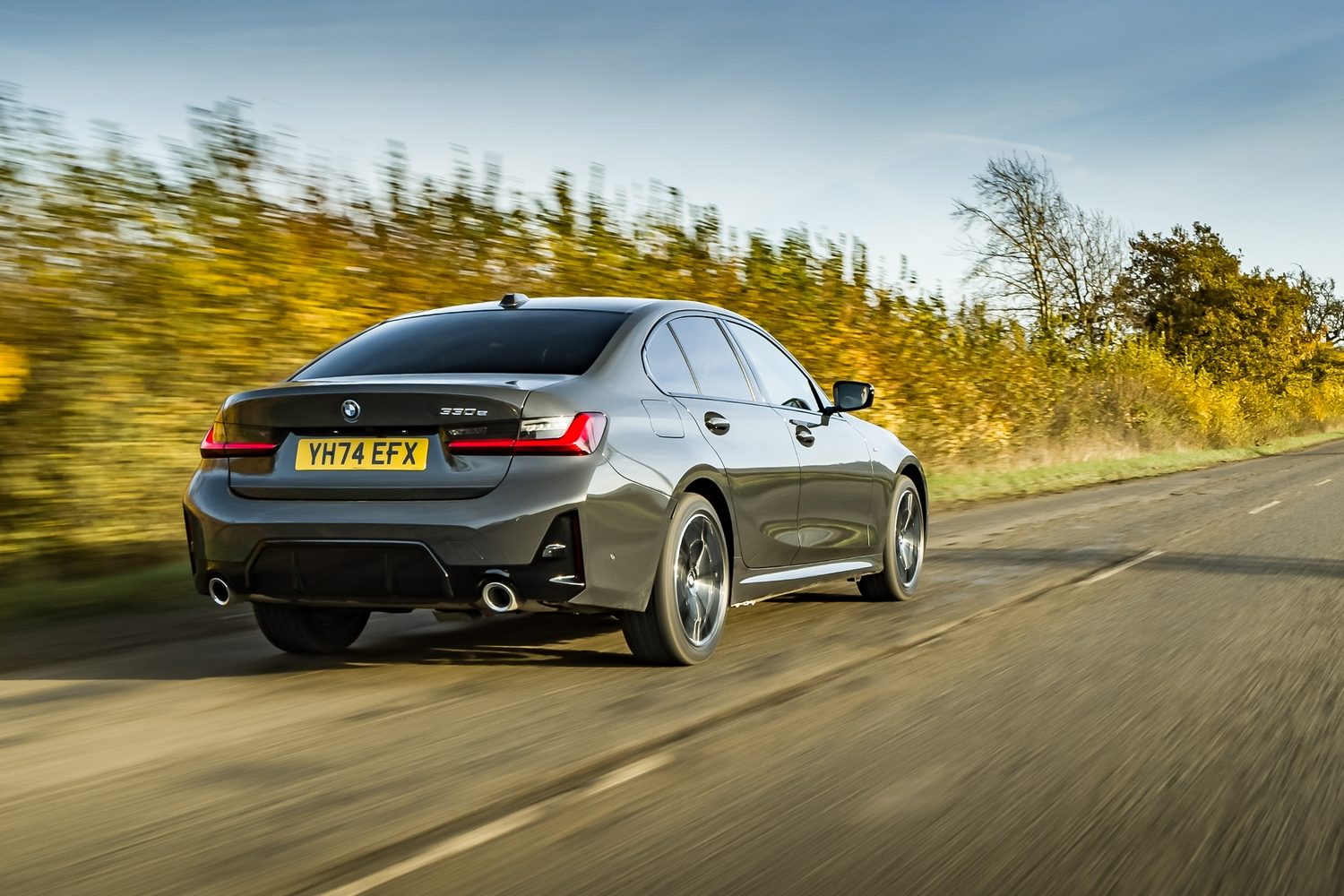
Yet there are times where the façade crumbles a little, revealing the sheer forces at play within the 330e’s chunky form. What with the M Sport suspension and big alloys, the 330e can occasionally thump over manhole covers and compressions in the road surface, while its vertical body control in the wake of bumps can be a little abrupt and harsh - it’s never out-and-out uncomfortable, and you could certainly live with it, but this overt firmness in the 3 Series’ make-up is only exacerbated in the PHEV, as BMW’s engineers have clearly toughened up its springs and dampers even more to counteract its weight gain.
Generally speaking, the 330e drives in a perfectly polished and proficient manner, but it’s by no means flawless in any department - power delivery, ride comfort, handling - and there have been non-M 3 Series models in the past which have been considerably more enjoyable for their driver than this.
How economical is the BMW 330e?
The pay-off for the bigger battery pack is that the 330e will be the cheapest 3 Series to run, by quite some distance as well. Even if you don’t believe the official WLTP 0.8-1.1 litres/100km (that’s between 257- and 353mpg, or thereabouts), having 19.5kWh to play with will help with long-term economy, making it diesel-like as long as you plug the car into the mains often and don’t do lots of 200km-plus trips on a regular basis.
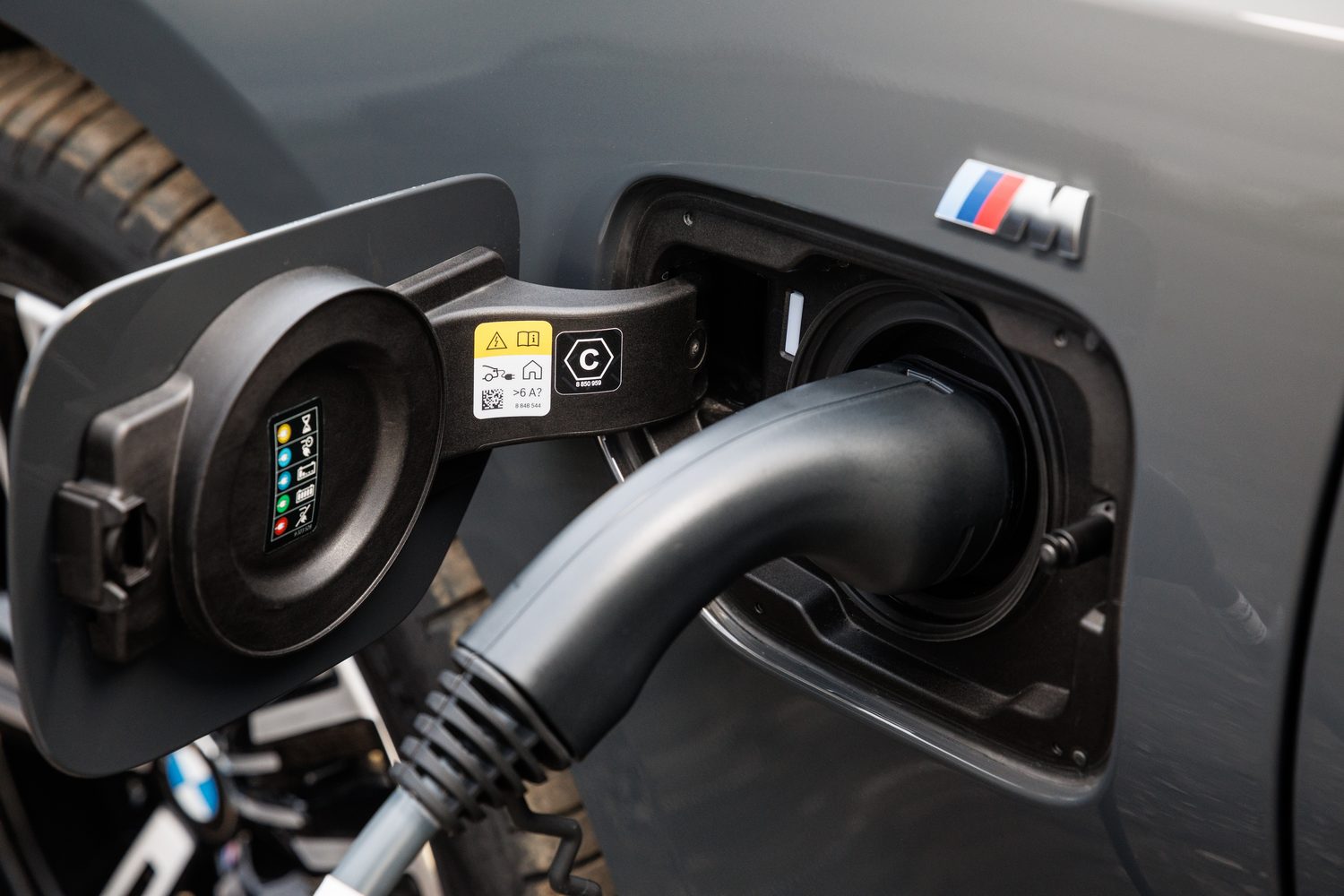
We drove the car fairly quickly for a 30km test drive and managed 2.8 litres/100km (99.5mpg), with a reasonable amount of battery charge left (and we didn’t start with anything like 100 per cent in it either), so it should prove to be the most frugal model in the 3 Series drivetrain range.
The reasons you’d buy a BMW 330e
The BMW 3 Series remains one of the best compact executive saloon cars out there, and while the 330e PHEV might not be the most thrilling of the breed, it is the one which is going to make the most financial sense. If it weren’t for our tax laws penalising it, we’d say the 320i is the purer all-rounder for those not looking to stretch to the M340i xDrive, but you cannot ignore what fiscal benefits the super-low CO2 outputs of the 330e will bring to owners and end-users. With the same high-quality cabin and great looks that the 3 Series has always had, anyone who ends up with this plug-in hybrid Beemer is going to be very happy with it indeed.
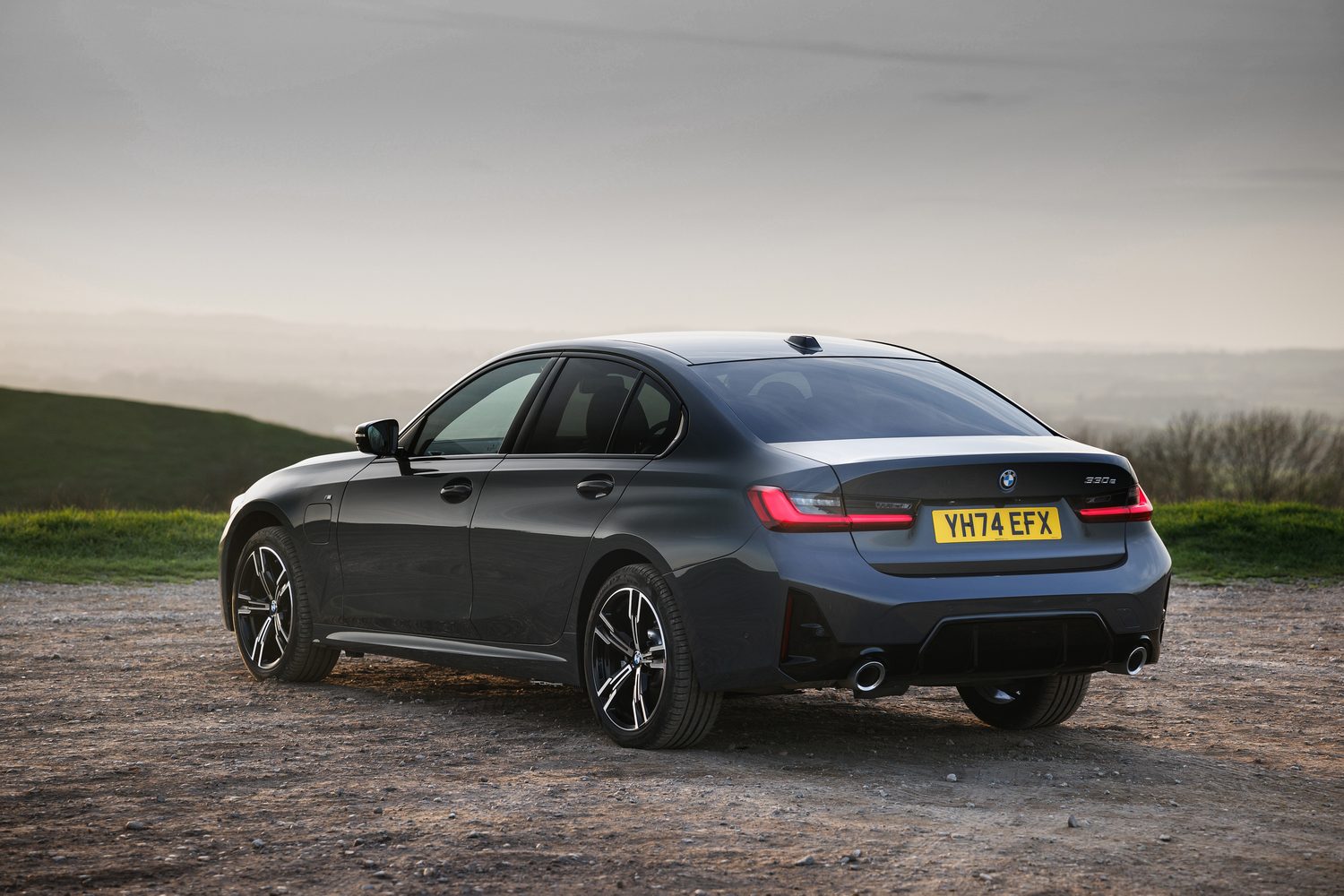
Ask us anything about the BMW 330e
If there’s anything about the BMW 330e we’ve not covered, or you’d like advice in choosing between it and other cars, you can avail of our (completely free) expert advice service via the Ask Us Anything page.

